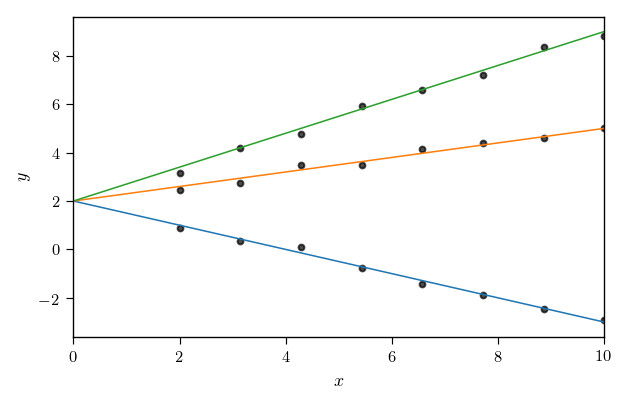I think this graphing code example does what you want, fitting two data sets with a single shared parameter. Note that if the data sets are of unequal length, that can effectively weight the fit toward the data set with more individual points. This example explicitly sets the initial parameter values to 1,0 - the curve_fit() defaults - and does not use scipy's genetic algorithm to help find initial parameter estimates.
import numpy as np
import matplotlib
import matplotlib.pyplot as plt
from scipy.optimize import curve_fit
y1 = np.array([ 16.00, 18.42, 20.84, 23.26])
y2 = np.array([-20.00, -25.50, -31.00, -36.50, -42.00])
comboY = np.append(y1, y2)
x1 = np.array([5.0, 6.1, 7.2, 8.3])
x2 = np.array([15.0, 16.1, 17.2, 18.3, 19.4])
comboX = np.append(x1, x2)
if len(y1) != len(x1):
raise(Exception('Unequal x1 and y1 data length'))
if len(y2) != len(x2):
raise(Exception('Unequal x2 and y2 data length'))
def function1(data, a, b, c): # not all parameters are used here, c is shared
return a * data + c
def function2(data, a, b, c): # not all parameters are used here, c is shared
return b * data + c
def combinedFunction(comboData, a, b, c):
# single data reference passed in, extract separate data
extract1 = comboData[:len(x1)] # first data
extract2 = comboData[len(x1):] # second data
result1 = function1(extract1, a, b, c)
result2 = function2(extract2, a, b, c)
return np.append(result1, result2)
# some initial parameter values
initialParameters = np.array([1.0, 1.0, 1.0])
# curve fit the combined data to the combined function
fittedParameters, pcov = curve_fit(combinedFunction, comboX, comboY, initialParameters)
# values for display of fitted function
a, b, c = fittedParameters
y_fit_1 = function1(x1, a, b, c) # first data set, first equation
y_fit_2 = function2(x2, a, b, c) # second data set, second equation
plt.plot(comboX, comboY, 'D') # plot the raw data
plt.plot(x1, y_fit_1) # plot the equation using the fitted parameters
plt.plot(x2, y_fit_2) # plot the equation using the fitted parameters
plt.show()
print('a, b, c:', fittedParameters)

